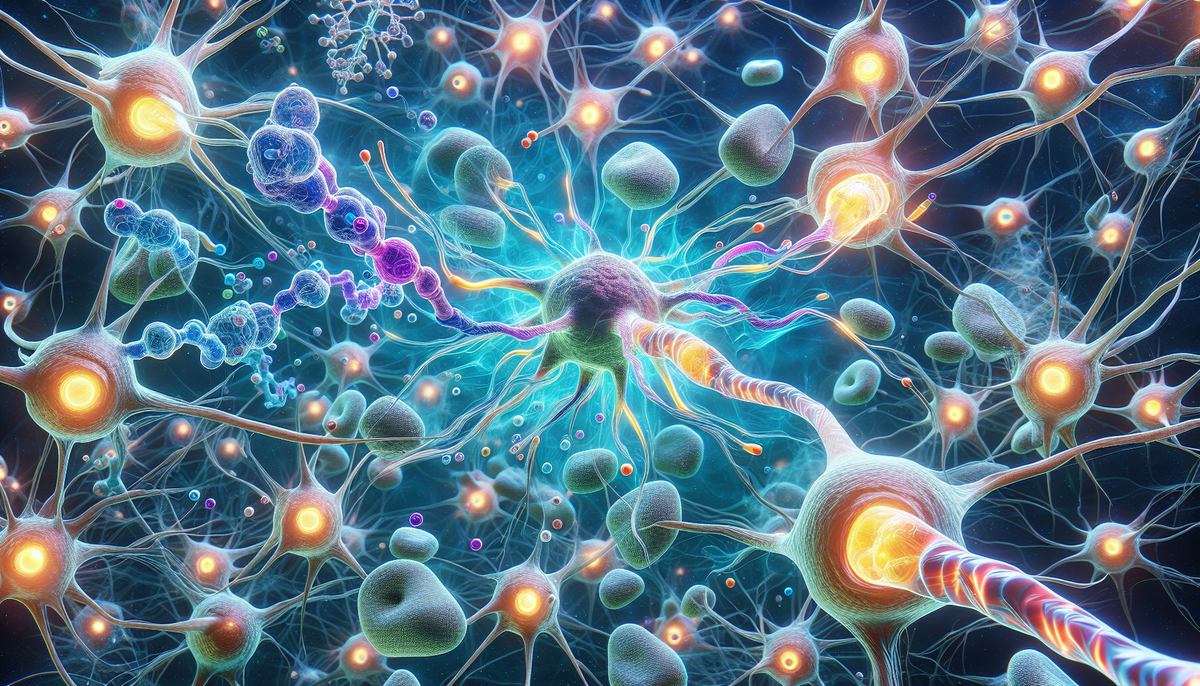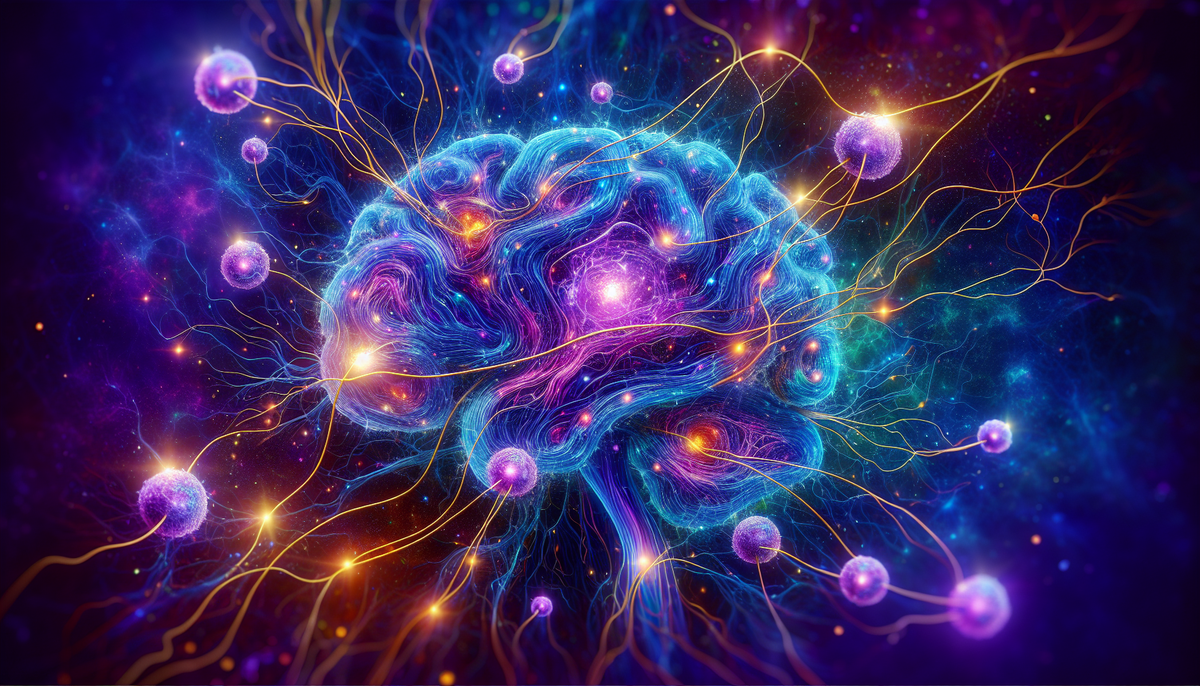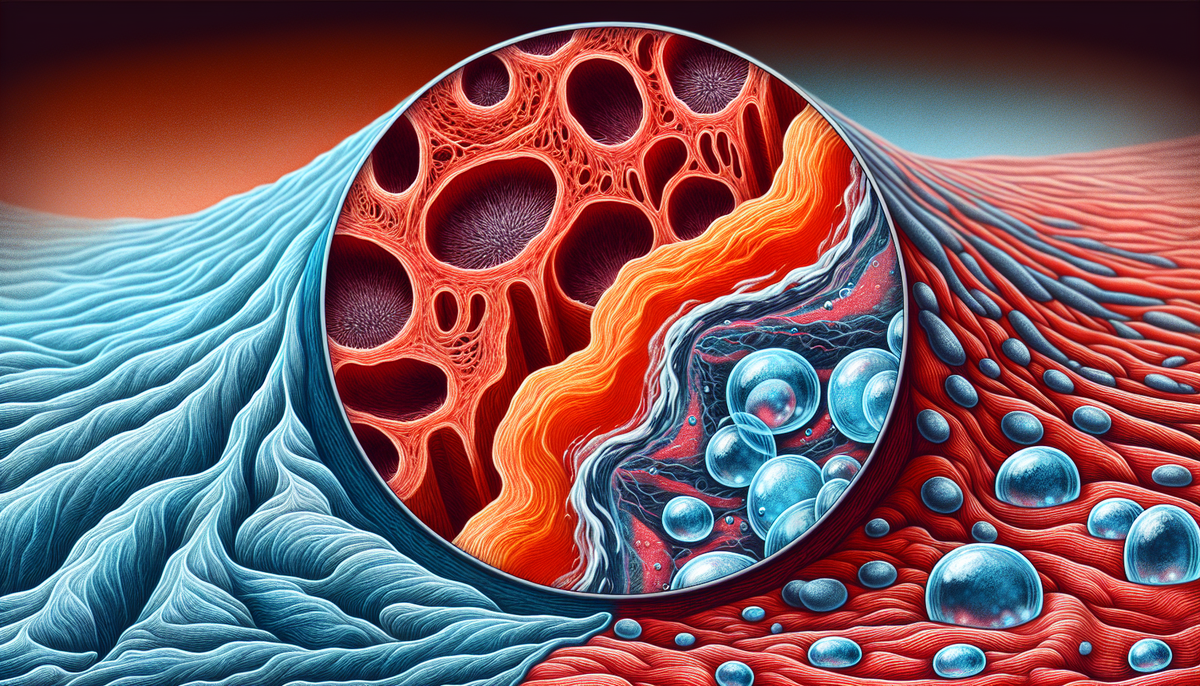What is CBG? History, Benefits and More
Written by: Hunter Podell, Subject Matter Expert and Website Founder
Published: March 15, 2024; Last updated: April 6, 2024
- 1. Key Takeaways
- 2. Unveiling CBG: The Mother of Cannabinoids
- 3. Chemistry of CBG: Understanding Its Structure and Formation
- 4. CBG and the Endocannabinoid System: A Synergistic Interaction
- 4.1 The Role of CB1 and CB2 Receptors
- 4.2 CBG Imitates Endocannabinoids
- 5. Therapeutic Horizons: Researching CBG’s Promising Effects
- 5.1 Neuroprotective Properties and Brain Health
- 5.2 Anti-Inflammatory and Pain Relief
- 5.3 CBG’s Role in Immune System Modulation
- 6. CBG vs. Other Cannabinoids: Unique Characteristics and Differences
- 7. The Entourage Effect and CBG: Enhanced Healing with Combined Forces
- 8. Incorporating CBG Into Wellness Routines
- 9. Addressing Safety: Known Adverse Effects and Considerations
- 10. CBG Consumption Methods: Tailoring Your Experience
- 11. Summary
- 12. Frequently Asked Questions
- 12.1 How does CBG make you feel?
- 12.2 Does CBG get you stoned?
- 12.3 What is CBG?
- 12.4 How does CBG interact with our body?
- 12.5 What are the potential therapeutic benefits of CBG?
- 13. References
Wondering ‘what is CBG’? Cannabigerol, or CBG, is a lesser-known cannabinoid from the cannabis plant with growing interest due to its unique properties. It’s a precursor to THC and CBD, but unlike THC, CBG won’t get you high. This article will guide you through CBG’s origins, its non-psychoactive nature, and why researchers are paying close attention to its possible health implications.
Key Takeaways
CBG, known as the ‘mother of cannabinoids’, is a non-psychoactive precursor to other cannabinoids like THC and CBD, found in higher concentrations in young cannabis plants.
Research indicates CBG’s potential therapeutic effects, including antioxidant, anti-inflammatory, and antitumoral properties, with promising implications for neurological disorders, immune system modulation, and pain relief.
CBG products are available in various forms like oils, capsules, edibles, and topicals, but caution and consultation with healthcare providers are advised due to potential adverse effects and interactions with other medications.
Unveiling CBG: The Mother of Cannabinoids

Lurking behind the shadows of its famous siblings, CBG is the quiet achiever of the cannabis plant. It’s often referred to as the ‘mother’ of cannabinoids, due to its critical role as a precursor molecule to other cannabinoids like THC and CBD. Unlike THC, CBG is non-psychoactive, meaning it doesn’t cause changes in mood, thought, or behavior. Quite intriguing, isn’t it?
CBG is derived from cannabigerolic acid (CBGA), the foundational building block from which all other cannabinoids are synthesized. You’ll find the highest concentration of CBG in young cannabis plants, as over time it converts into other cannabinoids like THC and CBD. So, in essence, without CBG, these other cannabinoids wouldn’t exist in cannabis sativa plants!
Chemistry of CBG: Understanding Its Structure and Formation
Diving into the chemistry of CBG, it is identified by the molecular formula C21H32O2. Its lengthy International Union of Pure and Applied Chemistry (IUPAC) name is 2-[(2E)-3,7-dimethylocta-2,6-dienyl]-5-pentylbenzene-1,3-diol, but don’t worry, you won’t be quizzed on that!
The journey of CBG begins with its precursor, cannabigerolic acid (CBGA), which is the acidic form of CBG. Through a process known as decarboxylation, which involves the removal of a carboxyl group aided by heat, CBG is formed. This transformation process is what gives birth to the myriad of cannabinoids we see in cannabis plants today.
CBG and the Endocannabinoid System: A Synergistic Interaction

CBG’s interaction with our endocannabinoid system (ECS) is like a well-choreographed dance. This endocannabinoid system cbg regulates various functions and processes in our body, from mood to appetite and inflammation.
CBG, acting as a partial agonist at cannabis cannabinoid res CB1 and CB2, directly binds to these cannabinoid receptors, offering a helping hand to this vital regulatory system.
The Role of CB1 and CB2 Receptors
Just as keys fit into specific locks, CBG connects with specific cannabinoid receptors in our body. There are two types of cannabinoid receptors – CB1 and CB2. They play a crucial role in the endocannabinoid system. The CB1 receptors are primarily located in the central nervous system and brain. In contrast, the CB2 receptors are mainly found in the immune system and other peripheral areas of the body.
CBG primarily connects with CB2 receptors, abundant in our immune system. This binding has demonstrated potential in regulating inflammation and pain within the immune system, as shown by recent cbg research. Inflammatory bowel disease is one condition that could potentially benefit from these findings.
So, the next time you’re dealing with a pesky inflammation, remember CBG might be the key to relief.
CBG Imitates Endocannabinoids
In a further twist, CBG doesn’t just interact with our endocannabinoid system – it closely mimics our natural endocannabinoids. These naturally occurring compounds play a crucial role in maintaining the internal balance of our bodies, helping us stay at our best.
Think of CBG as a helpful doppelgänger, stepping in to support our body’s harmony.
Therapeutic Horizons: Researching CBG’s Promising Effects

As we explore the therapeutic horizons of CBG, it’s important to note that research is still in its early stages. Preliminary studies show promising results, hinting at potential therapeutic benefits such as antioxidant, anti-inflammatory, and antitumoral properties. However, researchers agree that we need more robust data to fully understand the extent of CBG’s potential.
Neuroprotective Properties and Brain Health

One area where CBG shows significant promise is its neuroprotective benefits. CBG’s ability to inhibit inflammatory responses, support neurotransmitter function, and potentially enhance nitric oxide production could be a game-changer for brain health.
This means CBG might hold therapeutic potential for the treatment of neurological disorders such as Huntington’s disease, Parkinson’s disease, and multiple sclerosis. It could also influence PPAR, a target for therapies against neuroinflammatory and neurodegenerative diseases. The possibilities are exciting, to say the least.
Anti-Inflammatory and Pain Relief

The anti-inflammatory and pain-relieving properties of CBG have been shown to offer relief for chronic pain sufferers, with some reporting it to be more effective than certain prescription pain medications. CBG also possesses strong antibacterial activities, especially against methicillin-resistant Staphylococcus aureus (MRSA), offering potential new treatment strategies for drug-resistant bacterial infections.
However, as with all good things, it’s essential to exercise caution and moderation. More research is needed to establish the proper dosage and modes of administration for CBG’s anti-inflammatory and pain-relieving properties.
CBG’s Role in Immune System Modulation
CBG might play an essential role in our immune system. It enhances the activity of immune cells, promotes lymphocyte proliferation, and improves the CD4+/CD8+ ratio in spleen lymphocytes. Even more impressive, CBG increases the secretion of interleukin-2 and interleukin-10, which are significant for immune function.
However, before we give CBG a superhero cape, it’s crucial to note that these findings are still preliminary, and more research is needed. Nonetheless, the potential of CBG to reduce inflammation and pain by diminishing the activity of overactive immune cells is promising.
CBG vs. Other Cannabinoids: Unique Characteristics and Differences
When it comes to cannabinoids, it’s not a one-size-fits-all scenario. Each cannabinoid has unique properties that make it stand out. While CBG and CBD share potential therapeutic benefits and anti-inflammatory properties, they differ in molecular structure, prevalence in cannabis plants, and their effects on the body.
For instance, unlike CBD, CBG directly binds to cannabinoid receptors rather than just stimulating them. The prevalence of CBG in cannabis plants is also considerably lower compared to CBD, which is more abundant. These differences highlight the unique characteristics of CBG, underscoring its unique role in the world of cannabinoids.
The Entourage Effect and CBG: Enhanced Healing with Combined Forces
The world of cannabinoids gets even more fascinating when we consider the entourage effect. This phenomenon occurs when CBD is combined with CBG, enhancing the efficacy of each cannabinoid beyond their individual effects. The result? A powerful duo that could potentially offer enhanced benefits for mood disorders and offer anti-inflammatory and pain reduction effects.
Think of it as a superhero team-up, where each hero’s unique abilities are enhanced when they work together. In this case, the heroes are CBD and CBG, and their mission is to enhance your wellness journey!
Incorporating CBG Into Wellness Routines
So, how can you incorporate CBG into your wellness routine? The answer lies in the variety of CBG products available on the market, including:
Oils
Capsules
Edibles
Tinctures
Topicals
Patches
CBG oil can be conveniently added to your morning coffee or evening tea, allowing for easy integration into your wellness routines.
However, like any wellness product, it’s essential to use CBG responsibly. Start with a low dose of CBG and observe your personal tolerance levels. Also, ensure your CBG products are third-party lab tested with Certificates of Analysis (COAs) available.
Addressing Safety: Known Adverse Effects and Considerations
While CBG is generally considered safe, it’s important to be aware of potential adverse effects, including some specific CBG effects. These can include:
Dizziness
Changes in appetite
Digestive system upset
Drowsiness
Headaches
Dry mouth
To avoid potential adverse effects, always start with a lower strength of CBG and gradually work up.
If you have underlying health conditions or are on medication, it’s crucial to consult with a healthcare provider before using CBG. And remember, always opt for CBG products from reputable sources with third-party testing to mitigate risks.
CBG Consumption Methods: Tailoring Your Experience
Choosing the right consumption method can significantly influence your CBG experience. Whether you prefer:
tinctures
gummies
capsules
topical creams
Each method has its unique characteristics.
For instance, CBG gummies can offer a fun and easy way to incorporate CBG into your daily routine. Dissolving them under your tongue or between your gums and cheek allows for more rapid absorption into the bloodstream, creating a potent effect. On the other hand, swallowing gummies can vary the timing and strength of effects due to digestion and liver metabolism. The choice is yours!
Summary
In conclusion, CBG, the ‘mother’ of cannabinoids, holds promising potential for its therapeutic properties, from neuroprotective benefits to anti-inflammatory and pain-relieving effects. Despite being in the early stages of research, the preliminary results show a bright future ahead for CBG in the world of wellness. Remember, the key to a beneficial CBG experience lies in responsible use, proper dosing, and choosing quality products from reputable sources.
Frequently Asked Questions
How does CBG make you feel?
CBG can make you feel more alert, focused, relaxed, and may help reduce anxiety. It may also improve focus and concentration by reducing brain inflammation and increasing GABA levels.
Does CBG get you stoned?
No, CBG does not get you stoned because it does not directly interact with the CB1 receptors that trigger the sensation of being ‘high’. Even when consumed in large quantities, CBG does not induce a ‘high’.
What is CBG?
CBG, or Cannabigerol, is a non-psychoactive cannabinoid found in young cannabis plants, acting as a precursor to other cannabinoids like THC and CBD. It isn’t psychoactive and has potential therapeutic benefits.
How does CBG interact with our body?
CBG interacts with our body by binding to CB1 and CB2 receptors, regulating various physiological functions.
What are the potential therapeutic benefits of CBG?
CBG has potential therapeutic benefits including antioxidant, anti-inflammatory, and antitumoral properties, as well as promise for treating neurological disorders. This makes it an exciting area of research.
References
Calapai F, Cardia L, Esposito E, Ammendolia I, Mondello C, Lo Giudice R, Gangemi S, Calapai G, Mannucci C. Pharmacological Aspects and Biological Effects of Cannabigerol and Its Synthetic Derivatives. Evid Based Complement Alternat Med. 2022 Nov 8;2022:3336516. doi: 10.1155/2022/3336516. PMID: 36397993; PMCID: PMC9666035.
https://www.ncbi.nlm.nih.gov/pmc/articles/PMC9666035/
Jastrząb A, Jarocka-Karpowicz I, Skrzydlewska E. The Origin and Biomedical Relevance of Cannabigerol. Int J Mol Sci. 2022 Jul 19;23(14):7929. doi: 10.3390/ijms23147929. PMID: 35887277; PMCID: PMC9322760.
https://www.ncbi.nlm.nih.gov/pmc/articles/PMC9322760/

Written by Hunter Podell - Subject Matter Expert and Website Founder
Hunter has 8+ years of experience as a content writer and digital marketer. Earning his chops marketing in the healthcare space for over 5 years, Hunter is extremely familiar with the rules and regulations required to deliver high quality content that answers the user's needs while adhering to strict guidelines.
Join the CBDeals Club!
Get 10% off your first order and receive our best and exclusive promotions directly to your inbox!



